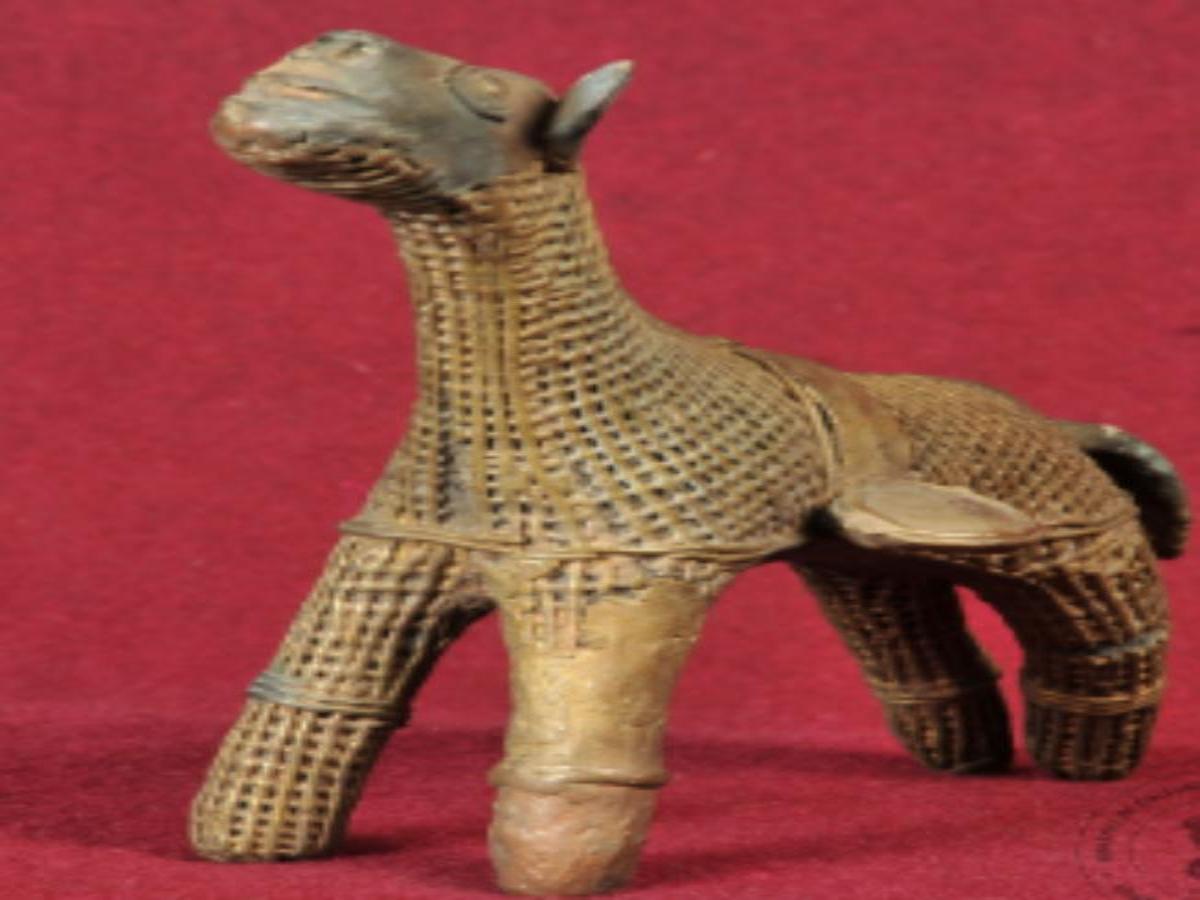State
Tribe Name
Art Type
short description
The Figure of a Camel is a grand example of traditional metal artwork based on tribal craftsmanship and story-telling by the Gunsur Malias tribe. This dynamic sculpture is formed from brass and is made using lost wax method of casting, an ancient practice passed over through time and is very much a significant cultural institution among the artisans of central and eastern India. The camel is depicted standing with its head raised vertically, provoking rudeness and alertness, very Grand qualities usually attributed to camels in a desert culture. The body surface of the camel is decorated with an intricate design of rhomboidal patterns that favoured both decorative and indicative approaches of the tribal stylization for their design. These patterns also reflected the esthetic values quite important to the Gunsur Malias tribe who often have geometric motifs in their artworks.
Thumbnail

Filter Postion
Left
Filter Background
Off
Theme
Filter Header Image

content
Image

description
The Figure of a Camel is a grand example of traditional metal artwork based on tribal craftsmanship and story-telling by the Gunsur Malias tribe. This dynamic sculpture is formed from brass and is made using lost wax method of casting, an ancient practice passed over through time and is very much a significant cultural institution among the artisans of central and eastern India. The camel is depicted standing with its head raised vertically, provoking rudeness and alertness, very Grand qualities usually attributed to camels in a desert culture. The body surface of the camel is decorated with an intricate design of rhomboidal patterns that favoured both decorative and indicative approaches of the tribal stylization for their design. These patterns also reflected the esthetic values quite important to the Gunsur Malias tribe who often have geometric motifs in their artworks.
Drawing on the dorsal neck surface, a distinct ridge forms added depth and reality of the artwork, while the tail is slightly raised to indicate motion and vitality. A well elaborated saddle complete with stirrups, sits on the back of the camel showing that the camel was primarily an induced, workable creature to the notions of nomadic and pastoralist. This feature further hints to a tribe intimate with and experienced in bonding animals that are not their own, perhaps, indicating cultural exchanges or symbolic meanings. Cultural significance that this brass representation bears is more than mere ornamentation; it may in fact be ritualistic or used in forming part of dowry collection.
Drawing on the dorsal neck surface, a distinct ridge forms added depth and reality of the artwork, while the tail is slightly raised to indicate motion and vitality. A well elaborated saddle complete with stirrups, sits on the back of the camel showing that the camel was primarily an induced, workable creature to the notions of nomadic and pastoralist. This feature further hints to a tribe intimate with and experienced in bonding animals that are not their own, perhaps, indicating cultural exchanges or symbolic meanings. Cultural significance that this brass representation bears is more than mere ornamentation; it may in fact be ritualistic or used in forming part of dowry collection.
Image Mode
landscape
promoted
On
Verified
Off
